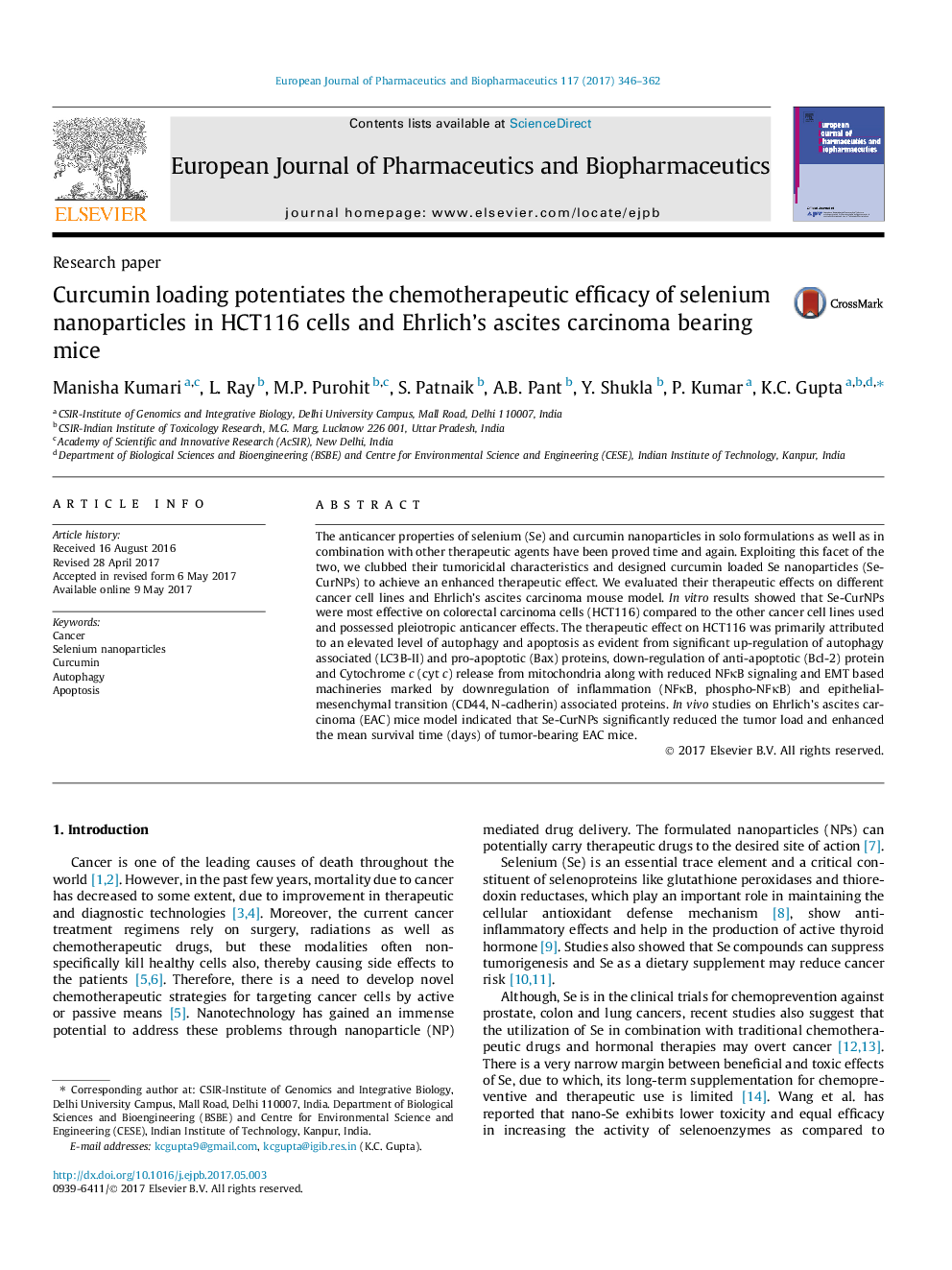| Article ID | Journal | Published Year | Pages | File Type |
|---|---|---|---|---|
| 5521525 | European Journal of Pharmaceutics and Biopharmaceutics | 2017 | 17 Pages |
The anticancer properties of selenium (Se) and curcumin nanoparticles in solo formulations as well as in combination with other therapeutic agents have been proved time and again. Exploiting this facet of the two, we clubbed their tumoricidal characteristics and designed curcumin loaded Se nanoparticles (Se-CurNPs) to achieve an enhanced therapeutic effect. We evaluated their therapeutic effects on different cancer cell lines and Ehrlich's ascites carcinoma mouse model. In vitro results showed that Se-CurNPs were most effective on colorectal carcinoma cells (HCT116) compared to the other cancer cell lines used and possessed pleiotropic anticancer effects. The therapeutic effect on HCT116 was primarily attributed to an elevated level of autophagy and apoptosis as evident from significant up-regulation of autophagy associated (LC3B-II) and pro-apoptotic (Bax) proteins, down-regulation of anti-apoptotic (Bcl-2) protein and Cytochrome c (cyt c) release from mitochondria along with reduced NFκB signaling and EMT based machineries marked by downregulation of inflammation (NFκB, phospho-NFκB) and epithelial-mesenchymal transition (CD44, N-cadherin) associated proteins. In vivo studies on Ehrlich's ascites carcinoma (EAC) mice model indicated that Se-CurNPs significantly reduced the tumor load and enhanced the mean survival time (days) of tumor-bearing EAC mice.
Graphical abstractDownload high-res image (205KB)Download full-size image
